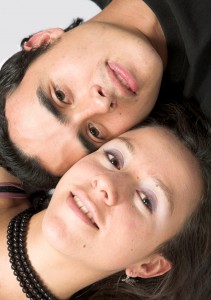 An Australian National University School of Art student, Martyn Jolly, states that the advent of technology such as social networking sites and facial recognition software has meant that the face is now a major part of how we transact our lives.
An Australian National University School of Art student, Martyn Jolly, states that the advent of technology such as social networking sites and facial recognition software has meant that the face is now a major part of how we transact our lives.
It is no secret that image is everything and that the younger generations can easily recognize a picture of famous singers and actors opposed to famous senators or politicians.
Martyn Jolly purported that, “facial recognition is now enmeshed in all this technology of publication and reduplication, and when we’re queuing at the supermarket checkout, we instantly recognize Angelina Jolie and Brad Pitt…in a micro-second because of that big fundamental human need to use that space to communicate.”
He went on to state in The Canberra Times, in reference to the face as a major part of how we transact, “There are psychological reasons, obviously, because it is the main communication interface between people, and facial expression is one of the few areas that actually is a universal language that is cross-cultural.”
An interesting tidbit about facial expressions is how many muscles contribute to human’s abilities to forge the seven universal facial expressions of emotion: fear, anger, contempt, happiness, surprise, sadness and disgust.
According to Curiosity from Discovery.com, there are 43 muscles in the human face, which are controlled by the seventh cranial nerve. This nerve starts in the cerebral cortex, goes through your skull and stops in front of your ears. The nerve then branches off in 5 separate sections creating the complex facial movements that humans are capable of making.
Here is a video of Dr. David Matsumoto discussing the origins of microexpressions.
[youtube]http://www.youtube.com/watch?v=_dJQXe1_7zA[/youtube]